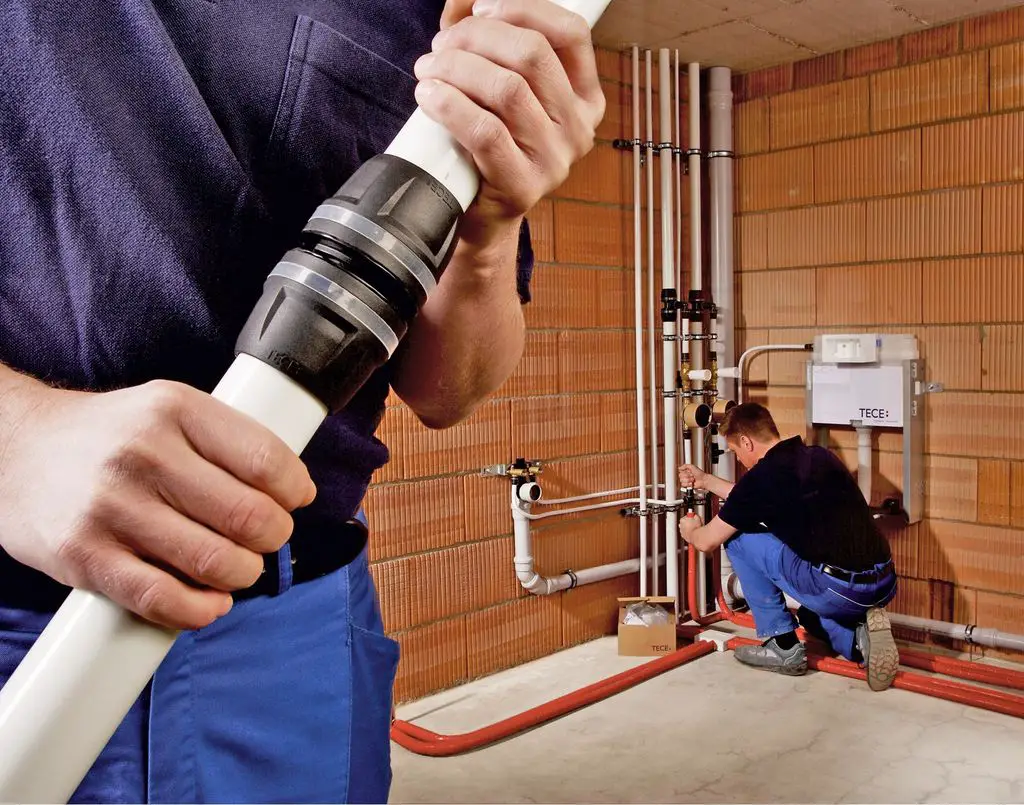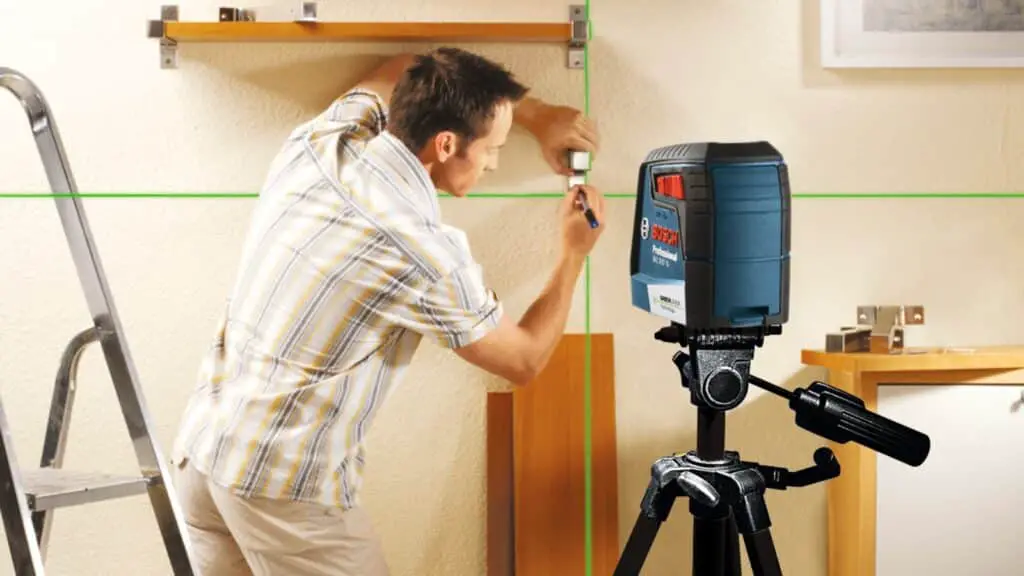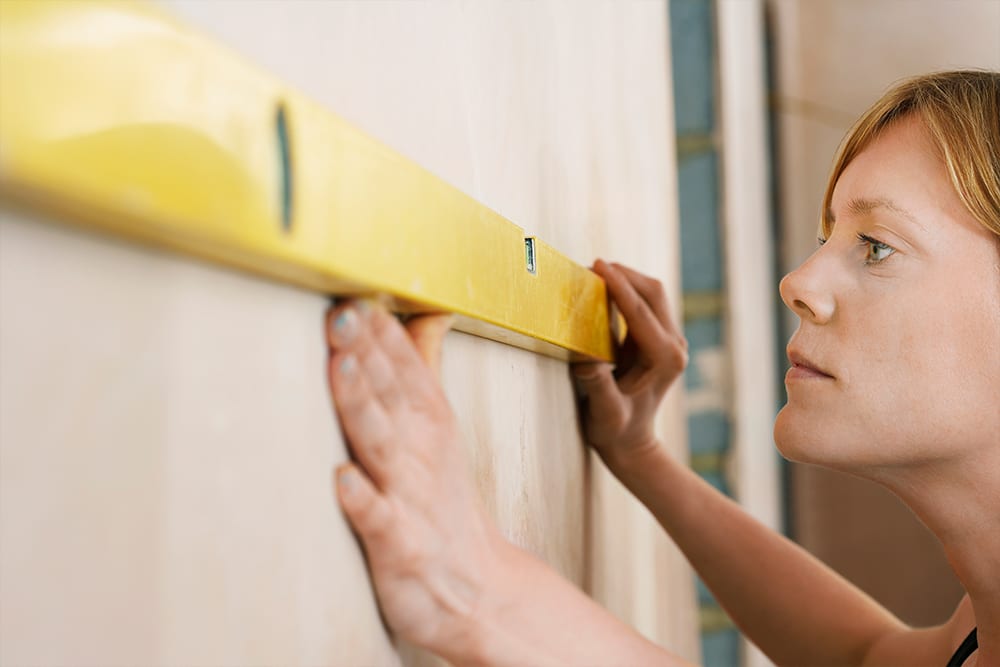How To Use A Plumb Line
Introduction
How To Use A Plumb Line: When it comes to achieving precise vertical alignment in construction, woodworking, or any project that requires accurate measurements, a plumb line is an invaluable tool. A plumb line, also known as a plummet, is a simple yet effective device that utilizes gravity to establish a true vertical reference line. By following a few basic steps, anyone can learn to use a plumbline with ease and accuracy.
To begin, let’s understand what a plumbing work line consists of. Traditionally, a plumbline consists of a weight attached to a string or cord. The weight at the end of the string is called a plumb bob, which is often made of metal or a heavy material like lead. The plumb bob is designed to hang freely and remain stationary, allowing the string to align vertically.
To use a plumb line effectively, start by finding a suitable anchor point. This can be a sturdy hook or nail on a wall, or any fixed object that can hold the weight of the plumb bob. Once you have chosen an anchor point, secure the plumbline by attaching it securely to the anchor. Make sure the line is taut and not tangled.
Next, allow the plumb bob to hang freely, ensuring that it is not disturbed by any external forces. As gravity acts on the plumb bob, it will align itself vertically, creating a straight line along its path. This vertical line represents a true plumb or vertical reference.

How do I start a plumb line?
To make a plumb line, rub a string with colored chalk and tack it to the top of the wall. Then attach a plumb bob (or other small weight) to the loose end. Holding the bob where it falls naturally, pull the cord taut. Then pull it and let it go, snapping it against the wall.
Starting a plumb line is a straightforward process that requires a few simple steps. By following these instructions, you can begin using a plumbline to establish accurate vertical alignment in your projects.
Gather the necessary tools
To start a plumbline, you will need a plumb bob and a sturdy string or cord. The plumb bob is a weighted object, often made of metal or lead, attached to the string. Ensure that the string is long enough to suit your needs.
Select an anchor point
Choose a fixed and secure anchor point where you want to establish a vertical reference line. This can be a hook, nail, or any other suitable object that can support the weight of the plumb bob and remain stationary.
Attach the plumb bob
Take the plumb bob and tie one end of the string securely to it. Make sure the knot is tight to prevent the plumb bob from detaching during use.
Secure the anchor
Fix the other end of the string to the chosen anchor point. Ensure that the string is taut and there are no twists or tangles in the line. The plumb bob should hang freely without any obstructions.
Observe the vertical alignment
Once the plumb bob is hanging freely, gravity will cause it to align vertically. Observe the position of the plumb bob and the vertical line it creates. This line represents a true plumb or vertical reference.
Start your measurements or alignments
With the plumb line established, you can now position your measuring instrument or reference point alongside the vertical line. This allows you to take accurate measurements or align objects vertically with precision.
What are plumb line rules?
Plumb lines and plumb rules determine vertical planes, termed plummets in the Bible. Each hangs from a line with a heavy plumb bob, which is perpendicular when free. They are one of the oldest emblems and have the same symbolic interpretation.
Plumb line rules, also known as plumbline principles or plumb line guidelines, are a set of fundamental rules or concepts that govern the proper use of a plumb line for establishing vertical alignment. These rules ensure accuracy and consistency in measuring and aligning objects.
The primary principle of a plumb line is that it relies on the force of gravity to establish a true vertical reference line. Gravity causes the plumb bob to align vertically, creating a straight line along its path. Select a sturdy anchor point to attach the plumbline securely. This anchor should be able to support the weight of the plumb bob without moving or shifting during use.
The plumb bob must hang freely from the string or cord without any obstructions.No external forces should contact or affect its alignment. Keep the plumb line rope or cable taut and untangled. This keeps the plumb bob vertical and straight.
When working with a plumb line, it is important to minimize or eliminate any external disturbances. Wind, vibrations, or accidental contact can disrupt the alignment of the plumb bob, resulting in inaccurate measurements or alignments.
Why do we use the plumbline?
The plumbline is one of the simplest tools in the average homeowner’s toolbox, but it is also one of the most versatile. You should use a plumbline whenever you need to make a straight, vertical line – whether that is for hanging wallpaper, putting up a painting, or checking the angle of a door.
The plumbline is used for several important reasons in various fields and industries.
The primary purpose of a plumbline is to establish accurate vertical alignment. It provides a reliable reference line that is perpendicular to the ground, allowing for precise measurements and alignments of objects, walls, columns, and other structural elements. In construction and engineering, the plumb line is crucial for ensuring structural stability. It helps builders and architects ensure that walls, beams, and other components are perfectly vertical, which is essential for maintaining the structural integrity of a building or structure.
The plumb line is utilized in design and aesthetics. By vertically aligning artwork, picture frames, and shelves, it creates visual balance. This makes a beautiful and harmonized display. A plumbline can measure line or surface straightness. Compare the plumbline alignment to additional reference points to find any inconsistencies and make corrections.
The plumbline can be used when a level surface is unavailable or impractical. Aligning items or measurements with the plumb bob’s vertical line creates a level reference.
Who uses a plumb?
Excavation and foundation contractors rely upon the plumb line, and constructing a chimney the tool can indicate whether a flue is running true vertically or veering off plumb. A plumb line is a tool used by a variety of professionals and individuals across different industries and trades. Here are some examples of who uses a plumb line:
Construction workers
Carpenters, masons, and general contractors employ plum lines. They align walls, columns, and other vertical constructions with plumb lines.
Woodworkers
Plumb lines are essential tools for woodworkers. They help align cabinets, shelves, and other furniture pieces vertically. Woodworkers rely on plumb lines to ensure precision and accuracy in their woodworking projects.
Surveyors
Surveyors use plumb lines to establish vertical reference points during land surveys. By employing plumb lines, they can measure the height, depth, and verticality of various features on a piece of land.
Architects and engineers
Architects and engineers often use plumb lines to check the vertical alignment of their designs. Whether it’s verifying the straightness of walls or ensuring the accuracy of structural elements, plumb lines are indispensable tools for these professionals.
DIY enthusiasts
DIYers and homeowners utilize plum lines too. A plumb line assists with precision when hanging picture frames, erecting shelves, or leveling tiles.

What is the plumb line test?
Standard practice in postural testing is to test a standing person with a plumb line (line running straight down the body viewed from front and side on), some goniometers (these measure joint angles) and some palpating (touching) of bony landmarks to make judgments on alignment.
The plumb line test, also known as the plumbline assessment, is a physical examination technique used in orthopedics and postural analysis to assess alignment and balance in the human body. It involves the use of a plumbline, which is a weighted string or cord, to evaluate the position of specific anatomical landmarks in relation to gravity.
During the plumb line test, the individual being assessed stands in an upright position while a plumbline is suspended from an overhead point. The examiner observes the alignment of certain key points on the body as they relate to the vertical line created by the plumbline.
The plumb line test provides valuable information about postural imbalances, muscle asymmetries, and structural deviations that may contribute to pain or dysfunction. It helps healthcare professionals, such as physical therapists, chiropractors, and orthopedic specialists, in formulating appropriate treatment plans or prescribing corrective exercises to improve posture and alignment.
Can a plumb line be used outdoors?
You can use a plumb line outside. However, avoid wind and excessive movement that could compromise the plumb bob’s stability.You can use a plumb line outside. No restrictions limit its use, but it is usually used inside. The principles and functionality of a plumb line remain the same whether used indoors or outdoors.
Despite these considerations, a plumbline can still be a valuable tool for establishing vertical alignment outdoors.It may align posts, fences, outdoor constructions, level ground, and arrange plants and landscape items.
You can effectively use a plumbline outdoors. Remember to adapt to the specific outdoor environment and make any necessary adjustments to ensure accurate and reliable vertical alignment in your outdoor projects.
Are there any safety precautions when using a plumb line?
When working with a plumb line, be cautious of the weight of the plumb bob and avoid letting it swing or hit objects or people. Keep the area clear to prevent any accidents or injuries.
Personal protective equipment (PPE)
Depending on the nature of your project, it is advisable to wear appropriate PPE such as gloves, safety glasses, and sturdy footwear. This will protect you from potential hazards or injuries while handling the plumbline or working in the project area.
Weight of the plumb bob
Plumb bobs can vary in weight, with some being quite heavy. Be cautious when handling the plumb bob, as it can cause injury if it swings or hits objects or people. Keep the plumb bob under control and avoid any sudden movements that could lead to accidents.
Clear workspace
Ensure that the area around the plumb line setup is clear of obstacles or clutter. This will minimize the risk of tripping or entangling with the string or cord, preventing accidents or damage to the plumb line.
Secure anchor point
When selecting an anchor point, ensure it is sturdy and capable of supporting the weight of the plumb bob. This will prevent any unexpected movement or detachment of the plumbline during use.
Working at heights
If you are using a plumb line in elevated positions or working on ladders or scaffolding, take appropriate precautions to prevent falls. Follow proper safety procedures and ensure that you are on a stable and secure platform.
By adhering to these safety precautions, you can minimize the risk of accidents or injuries while using a plumbline. Always prioritize your safety and the safety of others when working with any tools or equipment.
Can a plumb line be used for horizontal alignment?
Plumb lines align vertically. Laser or level levels are preferable for horizontal alignment.
Vertical alignment is the plumb line’s purpose. Gravity provides a plumb line’s vertical reference. A vertical route is created by gravity pushing the plumb bob.
Horizontal alignment requires various instruments and procedures. A bubble vial or laser beam level is used for horizontal alignment. Levels measure whether a surface or object is level or parallel to the ground.
If you need to establish horizontal alignment, a level is a more appropriate choice. It allows you to measure and adjust the orientation of objects or surfaces to ensure they are horizontal. Levels come in various forms, including traditional bubble levels, digital levels, and laser levels, each offering different features and precision.

Conclusion
Using a plumb line is a fundamental skill that can greatly enhance the accuracy and quality of various projects. By following the simple steps outlined in this guide, you can effectively utilize a plumb line to establish true vertical alignment. The key to using a plumbline lies in its simplicity. With just a weight attached to a string, the plumb bob, and a secure anchor point, you can create a reliable vertical reference line. By allowing gravity to guide the plumb bob, you can ensure that the line formed is true and precise.
The applications of a plumb line are wide-ranging. In construction, it can be used to ensure walls, partitions, or columns are perfectly vertical. In woodworking, it aids in aligning shelves, cabinets, and other furniture pieces. Even in everyday tasks such as hanging picture frames or installing light fixtures, a plumb line helps to achieve a visually pleasing and balanced result.
Its simplicity allows for quick and straightforward measurements, reducing the chances of error. By aligning your reference points or measurements with the plumb line, you can confidently ensure that everything is perfectly vertical. Whether you are a professional in the construction industry or a hobbyist working on a DIY project, understanding how to use a plumbline is an essential skill. It provides a reliable means of achieving vertical alignment, ensuring that your work is both structurally sound and aesthetically pleasing.








